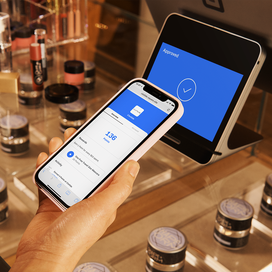Table of contents
There are many different types of email that you can send to your customers. To help you get started, we thought it would be helpful to review two types of email you’ll use a lot: automated and blast email.
What is automated email marketing?
Automated email is triggered when your customers take a specific action. For example, by signing up for your email list, your customer can trigger an automated welcome email (as long as you have one set up). The average open rate for such email is 38 percent, so it’s worth the little effort it takes to create.
The best thing about automated email is that you set it up just once. That’s right, just once. You can easily set up Automated Campaigns with Square Marketing, which has many different types of automated email, including:
- Welcome: This email is sent to new customers within 24 hours of their first purchase and encourages them to come back again.
- Winback: This email is sent to lapsed customers. Your lapsed customers are typically those who’ve made three purchases within a six-month period but haven’t returned in the last six weeks. This message is meant to encourage them to return. You can check who is a lapsed or regular customer by editing the Lapsed and Regular groups in your Square Customer Directory.
- Birthday offer: This email automatically sends a coupon to customers seven days before their birthday.
- Birthday collector: If you’re missing birthdays for some of your customers, this campaign can help you collect them. This email asks up to 50 customers per day if they want to share their birthday with you, and it adds their birthday to your Customer Directory when customers opt in.
- Reputation: This campaign automatically sends an email to any customers who visit your store frequently or have left you positive feedback through Square receipts. The email encourages them to leave a review of your business on Facebook or other review platforms. This type of email requires a one-time setup and continues to be sent until you stop the campaign.
- Loyalty: Create a message for all your Loyalty participants who are only one point away from earning a reward and remind them to come back soon.
What is blast email marketing?
Blast email marketing is when you send a one-time email to a large number, possibly all, of your customers at once. For example, let’s say you’re offering 30 percent off all winter coats in honor of the year’s first snowfall, or maybe you’re offering a two-for-one deal on your handmade holiday cards. You could email all your customers so they know about the great sales you’re offering. You might also send a newsletter blast to all your customers to let them know what you’ve been up to and if there are any great events to come.
However, we recommend that you do your best to segment your list before sending a blast email so that the right people receive it. When you segment your email list, you’re getting the right message to the right customers, who are likely to see it and click through to the offer.
Because blast email can go out to many people with a single message at one time, there are rules guiding businesses around the use of this marketing practice. It’s important to review the CAN-SPAM Act, which is a law that “sets the rules for commercial email, establishes requirements for commercial messages, gives recipients the right to have you stop emailing them, and spells out tough penalties for violations.”
When should you use automated email vs. blast email?
Think of automated email as email you can set up and forget about. A customer’s birthday is coming up? Don’t even think about it. Once you’ve set up your automated email, Square automatically sends it based on the information your customers have provided as well as the actions they take on your site.
Blast email, on the other hand, takes more effort as a customer’s action doesn’t trigger the message, and it should be used for important announcements that your customers should hear. Again, we suggest that you do your best to segment your email list so that the appropriate audience is receiving your email. The right audience is more likely to engage with your brand, which is a win-win for everyone.
![]()












